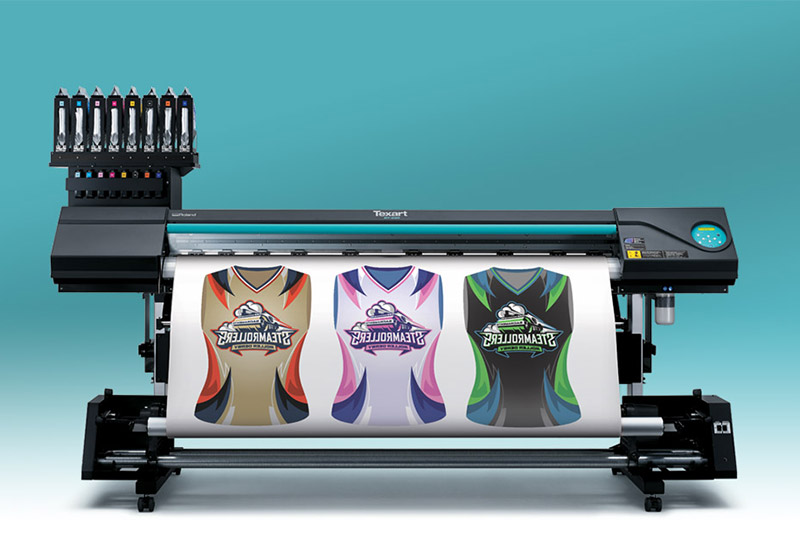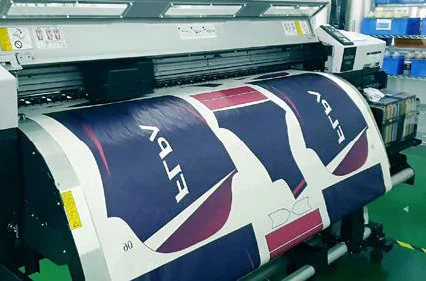Heat Transfer Vinyl Printing: Change Your T-Shirt Game Today
Heat Transfer Vinyl Printing: Change Your T-Shirt Game Today
Blog Article
A Comprehensive Overview to the Various Sorts Of Fabric Printing Techniques
Starting an expedition of fabric printing methods reveals a remarkable crossway of practice and advancement. Each approach, from the careful workmanship of block printing to the rapid effectiveness of screen printing, offers special purposes and offers unique benefits. Digital printing's adaptability and environmental awareness stand in raw comparison to the swift modification of warm transfer printing. Meanwhile, dye sublimation printing astounds with its capacity to generate lively, enduring designs on artificial materials. To really realize the nuances and prospective applications of these diverse techniques, a deeper examination is crucial.
Block Printing
Block Printing, one of the oldest methods of fabric decoration, has an abundant background that dates back to ancient civilizations. The procedure includes carving elaborate styles into wood blocks, which are after that dipped in dye and pressed onto fabric to develop patterns.
The precision and craftsmanship associated with block printing make it a labor-intensive process, but it additionally permits a high degree of modification. Craftsmens can develop one-of-a-kind patterns by integrating different blocks or varying the application of dye. This flexibility has actually contributed to the enduring popularity of block printing in both contemporary and conventional textile design.
Block printing is especially valued for its visual qualities, including the minor variations in pattern and shade that result from the hand-printing process. These blemishes offer an unique character per piece, differentiating it from mass-produced materials. Regardless of advances in modern printing technologies, block printing continues to be a cherished strategy, celebrated for its historical importance and creative value.
Screen Printing
Display printing, one more popular fabric design technique, has revolutionized the industry with its effectiveness and versatility. This technique includes producing a stencil, understood as a screen, and using it to use layers of ink on the printing surface. Each color in the layout requires a separate screen, which enables vivid and detailed multi-colored prints.

One of the crucial advantages of screen printing is its flexibility to various kinds of textiles, including cotton, polyester, and blends. This technique is particularly suitable for large-volume orders as a result of its cost-effectiveness and speed. The sturdiness of the prints is another significant benefit, as the ink bonds well with the fabric, ensuring durable styles that endure numerous cleans.
The process begins with preparing the displays by layer them with a light-sensitive solution. Once dried, the layout is moved onto the emulsion-coated display making use of a UV light. The subjected areas harden while the unexposed components are removed, developing a stencil. Ink is then pressed through the pattern onto the material using a squeegee.
Display printing is commonly used in the garment industry, promotional items, and personalized clothing. Its ability for top quality, detailed prints safeguards its status as a keystone method in textile printing.
Digital Printing
Digital printing has actually swiftly become a sophisticated method in the fabric market, leveraging innovative innovation to produce high-resolution styles straight onto material. Unlike traditional techniques, electronic printing utilizes inkjet printers to down payment pigment or dye-based inks onto textiles, making it possible for complex and vibrant patterns with an exceptional degree of detail and shade accuracy.
Among the key advantages of electronic printing is its flexibility. This technique permits on-demand printing, which considerably lowers waste and reduces stock prices. Additionally, it sustains brief runs and customized styles, making it ideal for limited-edition collections and custom projects. The removal of displays and other configuration demands further enhances effectiveness, reducing production time and labor expenses.
Moreover, digital printing is environmentally friendly. sublimation printing. It utilizes water-based inks and calls for much less water and energy compared to conventional methods, lining up with lasting techniques. The accuracy of electronic printing also permits the use of a broader array of textiles, consisting of cotton, silk, polyester, and blends, ensuring flexibility across different applications
Warm Transfer Printing
Just how does warmth transfer printing change material layout? Warm transfer printing entails making use of heat and pressure to move a design from a particularly formulated paper onto textile.
One of the main benefits of heat transfer printing is its capacity to produce high-grade, comprehensive photos rapidly and successfully. It is particularly appropriate for tiny production runs and customized orders, making it a preferred choice for individualized apparel and marketing products. In addition, this technique is flexible, suiting various sorts of materials consisting of cotton, polyester, and blends.
Moreover, warm transfer printing is fairly cost-efficient compared to other approaches, as it needs marginal arrangement and lower initial investment - sublimation printing. This cost, paired with its ability for generating vibrant, durable prints, underscores Visit Your URL its critical function in contemporary material style

Dye Sublimation Printing
Dye sublimation printing, a sophisticated textile printing method, provides unmatched vibrancy and long life for styles on various artificial textiles. The published transfer paper is then positioned click to investigate on the material, and both are subjected to high warm and stress utilizing a heat press.
One of the crucial benefits of dye sublimation printing is its capability to generate continuous-tone prints with detailed details and lively shades. Unlike other printing techniques, the color comes to be part of the material instead than resting on top of it, resulting in a soft and breathable surface.
Verdict
In summary, fabric printing methods each deal unique benefits customized to various requirements and applications. Block printing is prized for its artisanal quality, while screen printing is advantageous for high-volume production. Digital printing supplies convenience and environmental benefits, whereas warm transfer printing is suitable for quick customization. Dye sublimation printing creates dazzling, durable styles on artificial textiles. The diversity and development within these techniques highlight the vibrant and advancing nature of the towel printing sector.
Each technique, from the careful craftsmanship of block printing to the fast effectiveness of screen printing, serves one-of-a-kind objectives and supplies distinctive benefits. Digital printing's versatility and environmental awareness stand in raw contrast to the quick modification of warmth transfer printing. In spite of advancements in modern-day printing innovations, block printing continues to be look here a valued method, celebrated for its historic relevance and artistic worth.
Dye sublimation printing, an advanced fabric printing strategy, uses unrivaled vibrancy and long life for styles on various artificial materials. Digital printing provides flexibility and environmental benefits, whereas warm transfer printing is suitable for rapid modification.
Report this page